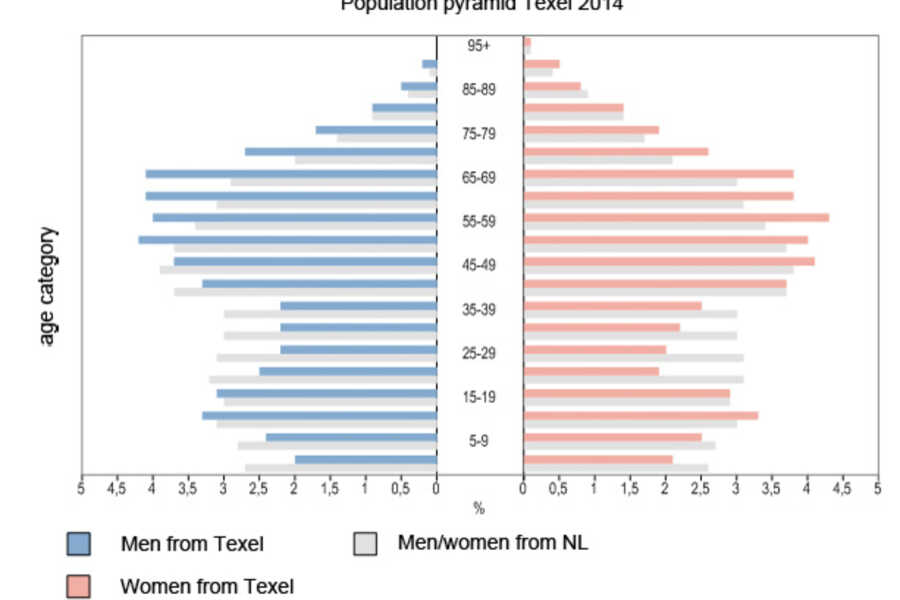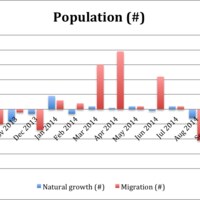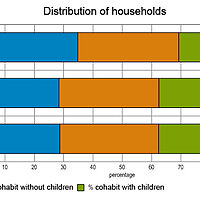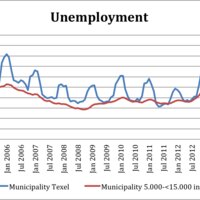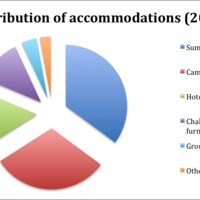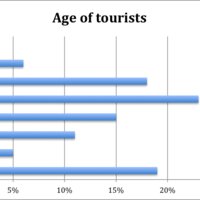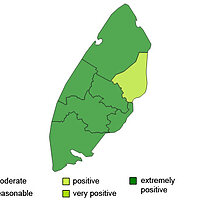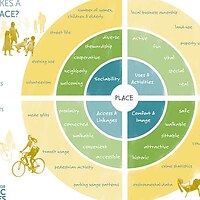2. Description and analysis of the current sub-system
2.1 Current Trends and Technologies
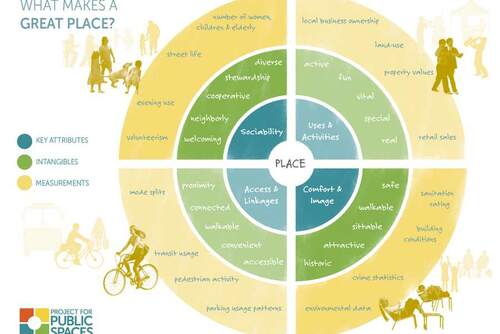
The trends that prevail in the public space are closely related to the technologies developed or implemented as one affects the other. if technology means a science intervention, technologies in terms of industrial products are relatively few when we talk about the public spaces. However, smart use of public spaces can result in sustainable developments and improvements to the system.
2.1.1 Major trends and technologies
a. Sustainable public lighting:
In the Netherlands and especially the mainland, a lot of energy is wasted in public lighting. Texel has adopted a smart and sustainable public lighting solution, where the energy consumption is expected to reduce enormously. Instead of leaving the lights run for all the dark hours ( which is even greater during the winter)
The total investment for the project amounts about € 3.5 million. Thanks to the energy savings of 65% and lower maintenance costs, the investment will be recovered within 15 years. Moreover, "Het Waddenfonds" pays about 40% of the investment and "De provincie Noord-Holland" almost 10%. Therefore the investment can be realized immediately. The municipality of Texel and its project partners show that the plan is not only sustainable, but over time will also save money. Therefore, the municipality hopes not only to inspire its own inhabitants to follow the example, but also other governments. (cradle to cradle islands, 2013)
Tailor Made solutions: Darkness where possible. Focus on where needed, when needed and of needed.
- Expected results Texel in 2015:
- 64% Energy saving or more
- 100% Energy Neutral Public Lighting
- Financially neutral implementation
b. Cloud power texel:
Texel has set itself the following four energy goals:
- Reduce energy consumption
- Generate more renewable energy on Texel to supply the energy demand, together as a community
- Use this renewable and locally generated energy on moments that it is available, whilst maintaining a level of comfort.
- Smarter use of the existing energy infrastructure
The cloud power aims at these goals, and currently the project is in the middle of a pilot phase where smart devices are installed at 300 premises in the community to enable reduction of energy use by energy awareness and insight. (A. Lauwerijssen, 2013)
“We are keeping accurate records of how much everyone generates and consumes,” says De Graaf. “All the participants are using innovative technologies such as smart meters and an energy management system for this. These systems are linked together and make it possible to exchange information between users and with the producers”. The community expects to benefit rapidly from the Cloud Power Texel approach’s benefits of a smart network without large scale investment in infrastructure (NL Agency, 2012)
c. Events
Specific areas of texel attract different kinds of users. As seen from the map of week 1, we see various activities taking places in different parts of the island every month. This attracts many tourists and also many companies that can put forth their products to the consumers. However, there are some sites which are also public spaces like the beach and the national park. These are the areas where a minimal intervention is preferred, in order to protect the natural eco-system. The technological developments here are only those which are completely harmless to these areas and in fact, are helping the nature.
d. Placemaking:
More than just creating better urban design of public spaces, Placemaking facilitates creative patterns of activities and connections (cultural, economic, social, ecological) that define a place and support its ongoing evolution. Placemaking is how people are more collectively and intentionally shaping our world, and our future on this planet.
Some designers have given placemaking a new definition by making public spaces multi-functional These trends are prevailing in many places around the globe including in many parts of netherlands. Howevery the scale of this application in the relatively low. Three are many interventions that include a moveable park to create a different atmosphere in the same public space without the need for constructing a special one. This allows the users to probably park their car in the parking-lots and at some points in time, have a green garden space where it enables users to lay on benches and enjoy the sunshine. Park(ing) day for example is one such project in San Francisco which started with occupying one parking space for two hours, which was the term of the lease offered on the face of the parking meter.sometimes, Even Urban farms were placed at these sites. (rebar studio)
2.2 Actors
In the following chapter is elaborated on the statistics concerning Texel. The population of Texel and their tourists are analysed and conclusions are drawn for the implementation of a sustainable public space. The question "Who are actors, their problem definitions, needs, interests etc.?" will be answered in this chapter.
2.2.1 Data about Texel
In the following chapter is elaborated on the statistics concerning Texel. The population of Texel and their tourists are analysed and conclusions are drawn for the implementation of a sustainable public space. The question "Who are actors, their problem definitions, needs, interests etc.?" will be answered in this chapter.
Population
Texel has about 13.500 inhabitants. The population of Texel is differing from the population in the Netherlands. The most noticeable fact is the high percentage of inhabitants above 50 years, which is higher for every age group above the 50. This means that there live relatively a lot of elderly people. Another fact that cannot be ignored, are the few people on the island between the 20 and 40 years old. Probably this is related to the opportunities for study and work. The small amount of children between 0 and 10 is probably due to the fact that their parents, the group of people between 20 and 40 years old, are neither living on the island.
The groups that especially should be considered for designing the public space are the elderly people (above 50 years). The group of teenagers should also be taken into account because they are representing the second group of Texel.
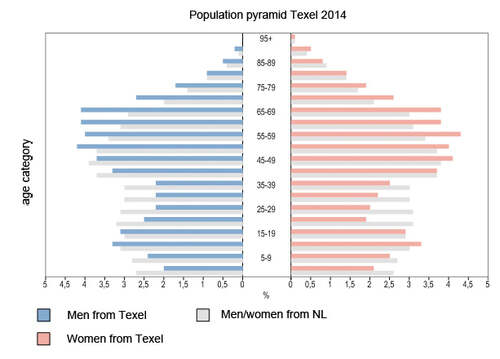
Figure 1: Population of Texelaars (CBS, 2014)
The second graph (Table 1) shows the variation in population during one year. The natural growth and decline is equal to the growth in municipalities with the same characteristics. However, the migration numbers are clearly higher during spring and lower during fall. This has mainly to do with the fact that people who own a summer cottage move during the high season (summer) to Texel.
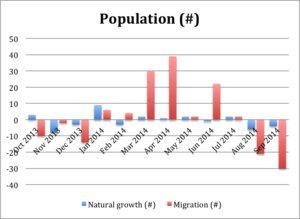
Table 1: Population Texel (CBS, 2014)
The distribution of the households is slightly different compared to similar municipalities. Texel has a slightly higher percentage of single households. The number of cohabits with children is about 8% smaller (Figure 2).
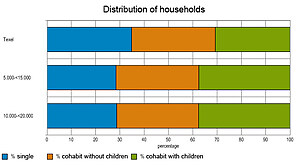
Figure 2: Distribution of households (CBS, 2014)
Unemployment
The unemployment rates (unemployed people looking for work) increases during the winter season. During summer these rates are similar to municipalities with same characteristics. There is a clear sine visible in this graph, which could easily related to the economy that is especially based on tourism and agriculture. What is not mentioned in this graph is the amount of hours working during the season. It is likely that during the summer a lot more working hours are made compared to the winter.
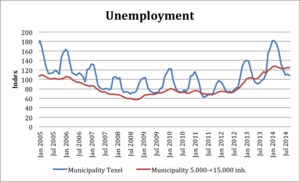
Table 2: Unemployment of Texelaars (CBS, 2014)
Tourism
Every year, approximately 800.000 tourists a year visit Texel (Ecomare, 2014). A lot of them spend the night as well for a couple of days. The average number of nights tourists spend on the island is 4,7 nights, which is decreased compared to 2007. About 44.000 places are available where people can spend their nights. The distribution of these accommodations can be found in Figure 3. In ten years, the number of accommodations increased by 7,8%, especially because of the increase in camping sites. Almost 80% of the visitors already visited the island, so the number of returns is high. (VVV Texel, 2014)
The main motives to visit Texel are (in order of magnitude) (VVV Texel, 2014):
- Visit the beaches
- Walking
- Shopping/visit villages
- Dining
- Nature/visit Slufter
- Rest
- Cycling
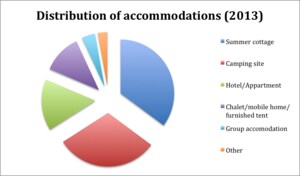
Figure 3: Distribution of accommodations (VVV Texel, 2014)
Figure 4 shows that the largest group of tourists contains especially people from the age group 45-64 years. Teenagers are the second largest age group. About two-thirds of the tourists come from the Netherlands; the other part is represented by people from Germany. (VVV Texel, 2014)
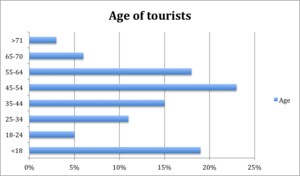
Figure 4: Age of tourists (VVV Texel, 2014)
Liveability barometer
For multiple municipalities in the Netherlands, a 'liveability barometer' (in Dutch: Leefbaarometer) is created. Figure 5 shows the liveability barometer of Texel. Almost all areas score 'extremely positive', except for the area around Oosterend which scores 'very positive'. Public space is an important aspect of this barometer. Examples of public space are:
- Share of dilapidated buildings
- Noise pollution
- View on inland waters
- Value of rental houses
- Green space
- Etc.
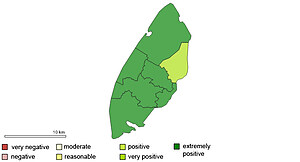
Figure 5: Liveability barometer Texel (Leefbarometer, 2014)
2.2.2 Conclusion
In the conclusion the following question will be answered: "Who are actors, their problem definitions, needs, interests etc.?". The answer is categorized into three sections.
Actors
The largest group of inhabitants on Texel are the elderly people (age 45+). During summer, many tourists (of the same age group) visit the island and use the public space as well. Of all groups, these two age groups will use the public space the most compared to other age groups; therefore the focus lies on the age group of 45 years and older. Both the tourists and Texelaars are taken into account.
Problem definition
From the data above, it cannot be concluded that there is a specific area that needs to be improved. It is also not yet known which problems the inhabitants and tourist are facing with the public space of Texel. Additional research has to be performed.
Needs and interests
Main attractions for visitors are the beaches and the villages. Walking is also a popular activity. These three aspects could easily be combined with a sustainable public space. If signs are necessary, they should be clear for both Dutch and German people. The percentage of people spending the night on camping sites increases, therefore the sustainable public space could respond to this development.
The public space should be accessible especially during summer, because the number of people on the island almost doubles during high season.
2.3 Rules and Regulations: Public space. Education. Recreation. Nature
Duinen van Texel
On 1st of May 2002, Duinen van Texel (4,300 ha) was established as a national park.Each year, five million people visit the island of Texel and the National Park. The island is also a popular destination for school trips. Walking and cycling are popular activities, and there are wheelchair trails for the disabled.
2.3.1 Dutch nature policy
Nature in the Netherlands has experienced considerable losses in the past. High population density caused nature areas to be changed into agriculture, housing, roads and industry. Regarding these factors, in 1969, the Netherlands joined the IUCN, the International Union for the Conservation of Nature, and pledged to protect important ecosystems, for example by establishing national parks.
Nature policy in the Netherlands aims to preserve nature and to continue the development of nature. These aims are achieved through the protection of species and the protection and development of nature areas. What is more, policymakers treat the national parks as a single unit, referring to it as the system of National Parks in the Netherlands. Furthermore, it is important to establish that protecting individual ecosystems is important, but small isolated natural areas are vulnerable. In the Netherlands, there is a national nature policy plan: 'Nature for people, people for nature'. Therefore, the Samenwerkingsverband Nationale Parken that is cooperation between National Parks in the Netherlands was established in order to organize and increase the collaboration between national parks. Besides, the national parks other parties are involved in the cooperation, such as the Ministry of Agriculture, Nature and Food Quality, the National Forest Service and Natuurmonumenten.
Within the policy it is stated that the national parks were established with four main objectives, which are the protection and development of nature and the landscape, outdoor recreation, and promoting education. For instance, research a good example of how these three objectives are merged together. In fact, research is an important tool for policymakers. What is more, it provides important data that supports the effects of management measures, and information on how animal and plant populations develop, and on the effects of recreation.
For instance, the Natura 2000 network safeguards the survival of specific species and habitats as laid down in the European Birds and Habitats Directives. This network is part of the Pan European Ecological Network (PEEN) of the Council of Europe. It is important to mention that, the Ministry of Agriculture, Nature and Food Quality is bound by international agreements on National Parks to safeguard the functioning of the Dutch system of National Parks as a whole. The Minister grants annual subsidies to the parks to implement their year plans, as based on the ten-year management and development plans. What is more, the Ministry gives one-off support to activities that enrich the quality of the National Parks system.
On an international level, there are important treaties, such as the Ramsar (concerning water-rich regions) and Bonn, as well as directives from the European Union, such as the Habitat Guideline, the Bird Directive and Natura 2000. Establishing National Parks is also an instrument for nature policy. In fact, to encourage cooperation between the Dutch National Parks and other parks in Europe, these 20 parks are members of the European Federation for National Parks, Europarc. Members of the Federation participate in annual meetings and working groups to share experience on nature protection, management and design, sustainable tourism, forms of collaboration, marketing, monitoring, education and training.
(SamenwerkingsverbandNationaleParken, 2014) (Ecomare, 2014)
Bibliography
A. Lauwerijssen, 2013, the island of Texel towards a sustainable energy future. (http://www.capgemini.com/blog/sustainability-blog/2013/12/the-island-of-texel-towards-a-sustainable-energy-future-0)
Cradle to cradle islands, 2013, Texel first municipality with zero-energy public lighting (http://c2cislands.org/sjablonen/1/infotype/news/item/view.asp?objectID=2015)
NL Agency 2012-, ministry of economic affairs, agriculture and innovation, Cloud Power Texel,- experimenting with intelligent networks. http://www.rvo.nl/sites/default/files/CloudPowerTexel.pdf
Rebar studio, Park(ing) day, (http://inhabitat.com/talking-public-space-and-urban-intervention-with-san-franciscos-rebar-studio/rebar_parkcycle-728/?extend=1)
CBS. (2014, 12 1). Factsheet huishoudens naar samenstelling. Retrieved 12 1, 2014 from Texel in cijfers: http://www.texel.incijfers.nl/Quickstep/QsReportAdvanced.aspx?report=fccbs_hhs
CBS. (2014, 11 21). Texel in cijfers - Bevolking. Retrieved 11 21, 2014 from Texel in cijfers: http://www.texel.incijfers.nl/
CBS. (2014, 11 21). Texel in cijfers - Werkeloosheid. Retrieved 11 21, 2014 from Texel in cijfers: http://www.texel.incijfers.nl/
Ecomare. (2014, 12 1). Recreatie op Texel. Retrieved 12 1, 2014 from Ecomare: http://www.ecomare.nl/ecomare-encyclopedie/gebieden/waddengebied/nederlands-waddengebied/texel/recreatie-op-texel/
Leefbarometer. (2014, 12 1). Leefbaarometer. Retrieved 12 1, 2014 from Leefbaarometer: http://www.leefbaarometer.nl/leefbaarheidskaarten;jsessionid=F79E5E3EC4EF1F3DDF57A6E3D9595355
VVV Texel. (2014, 12 1). Factsheet toerisme op Texel 2014. Retrieved 12 1, 2014 from Texel: http://www.texel.net/nl/voor-de-pers/wist-je-dat-van-texel/
Worpole, K. &. (2007, 04 23). The Social Value of Public Space . Retrieved 12 5, 2014, from Joseph Rowntree Foundation: http://www.jrf.org.uk/publications/social-value-public-spaces
Ecomare. (2014). Dutch Nature policy. Retrieved 12 5, 2014, from Ecomare: http://www.ecomare.nl/en/encyclopedia/man-and-the-environment/nature-management/nature-policy/
SamenwerkingsverbandNationaleParken. (2014). Dutch Nature Policy. Retrieved 12 5, 2014, from Samenwerkingsverband Nationale Parken: http://www.nationaalpark.nl/documents/nationale-parken/nederlands-natuurbeleid.xml?lang=en

